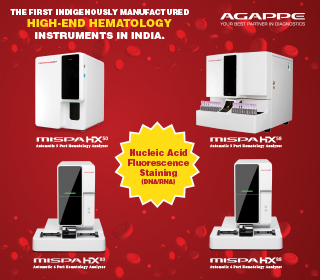Trends
CPAP devices market to grow by USD 1.33B from 2024-28

The global Continuous Positive Airway Pressure (CPAP) devices market size is estimated to grow by USD 1.33 billion from 2024-2028, according to Technavio. The market is estimated to grow at a CAGR of about 6.35% during the forecast period. Increasing prevalence of sleep apnea and respiratory disorders is driving market growth, with a trend towards increasing number of partnerships and collaborations.
Key market trends fueling growth
The CPAP devices market is experiencing significant growth due to an increasing number of partnerships and collaborations between vendors and medical technology companies. These strategic alliances enable vendors to expand their distribution channels and enhance their product offerings by integrating software tools into their devices. For instance, Compumedics’ collaboration with Radiometer Pacific includes the addition of the TCM5 flex transcutaneous monitor to Compumedics’ sleep diagnostic solutions. Similarly, ResMed has partnered with Verily to develop software solutions for sleep apnea and other respiratory disorders. Philips Respironics has also collaborated with Inspire Medical Systems to create an implantable device for sleep apnea. These collaborations are beneficial for patients and the healthcare industry, as they lead to the development of innovative solutions that improve patient outcomes and reduce the burden of respiratory disorders on healthcare systems. Overall, the growing trend of partnerships and collaborations in the CPAP devices market is expected to drive market growth during the forecast period.
The Continuous Positive Airway Pressure (CPAP) devices market in the medical devices sector is experiencing significant growth due to the increasing demand for alternative treatments for sleep disorders like Sleep Apnea and Hypopnea Syndrome. The aging population and rising healthcare spending are key drivers, expanding the patient pool. CPAP devices are increasingly being used as ventilator substitutes in hospital settings and home care, addressing health risks related to cardiovascular disease and sleep services. Innovative therapies like Mandibular Advancing Devices and Heated Humidifiers enhance patient comfort. Reimbursement policies, remote patient monitoring, and telemedicine facilitate home-based treatment. Noise reducing technology and FDA emergency policies ensure safety and patient compliance. Product segmentation includes different types of CPAP machines, masks, and accessories. However, contamination risks and aerosolization are challenges to be addressed.
Research analysis
The Continuous Positive Airway Pressure (CPAP) devices market is witnessing significant growth due to the rising prevalence of sleep disorders such as Sleep Apnea and Hypopnea Syndrome, particularly in the geriatric population. These respiratory assistance therapies are essential for treating Obstructive Sleep Apnea, a respiratory disorder characterized by repeated pauses in breathing during sleep. The undiagnosed and treated sleep apnea cases are increasing, leading to a higher demand for CPAP devices. Factors such as unhealthy dietary habits, obesity, comorbidities like hypertension, and physical inactivity contribute to the development of sleep apnea. Patient comfort is a critical factor in the adoption of CPAP devices, leading to advancements in technology such as Heated Humidifiers and Noise Reducing Technology. Telemedicine and home-based treatment are also gaining popularity in home care settings. Alternative treatments like Mandibular Advancing Devices and ventilators are available, but CPAP devices remain the gold standard due to their effectiveness and ease of use. The market for CPAP devices is expected to grow significantly due to the aging population, increasing healthcare spending, and the high mortality rate associated with untreated sleep apnea. Cardiovascular disease is a significant comorbidity, making the use of CPAP devices crucial for managing respiratory disorders and reducing healthcare costs.
Market research overview
The Continuous Positive Airway Pressure (CPAP) devices market caters to the growing prevalence of sleep disorders such as Sleep Apnea and Hypopnea Syndrome, particularly in the geriatric population. Patient comfort is a significant factor in the market, leading to the integration of technologies like Heated Humidifiers and Telemedicine for home-based treatment in home care settings. Infusion therapy and FDA emergency policies have expanded the use of CPAP devices as ventilator substitutes. However, concerns over aerosolization and contamination risks persist, affecting patient compliance. Product segmentation includes Manual and Automatic CPAP devices, with Adult Patients and Pediatric patients being the primary consumer groups. Hospitals and Private Clinics are major end-users, while Competitive Pricing, Reverse Engineering, and Alternative treatments like Mandibular Advancing Devices pose challenges. Comorbidities such as Obesity, Hypertension, Diabetes, Cardiovascular diseases, Depression, and unhealthy dietary habits contribute to the rising patient pool. Healthcare spending, aging population, and public health initiatives are key drivers, with Sleep services, Innovative therapies, and Reimbursement policies shaping the market landscape. Remote Patient Monitoring and Noise Reducing Technology are essential features in the evolving CPAP devices market. Technavio










